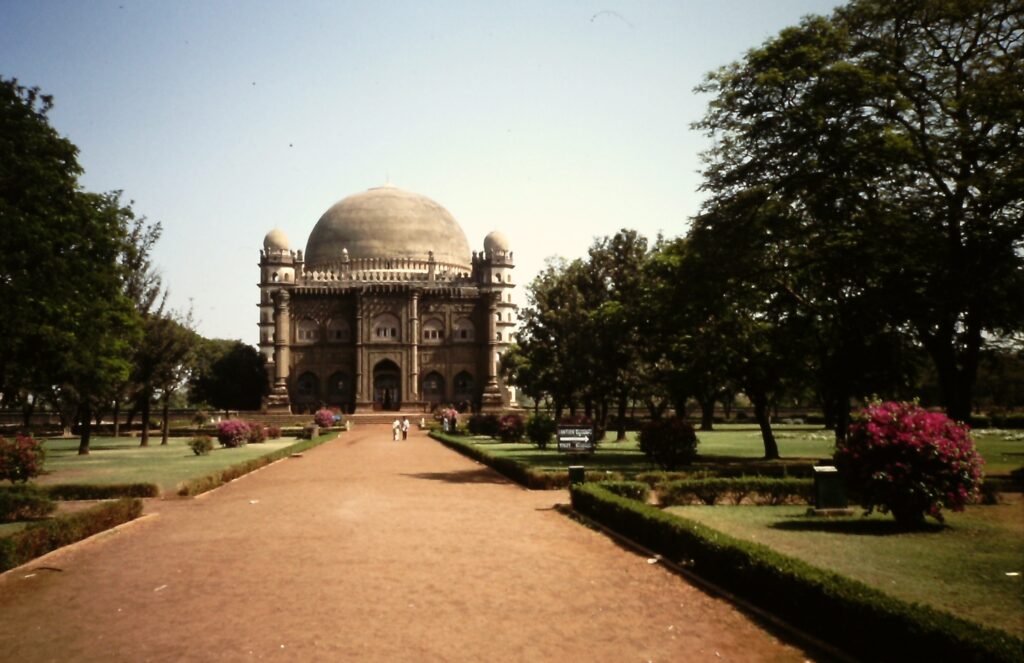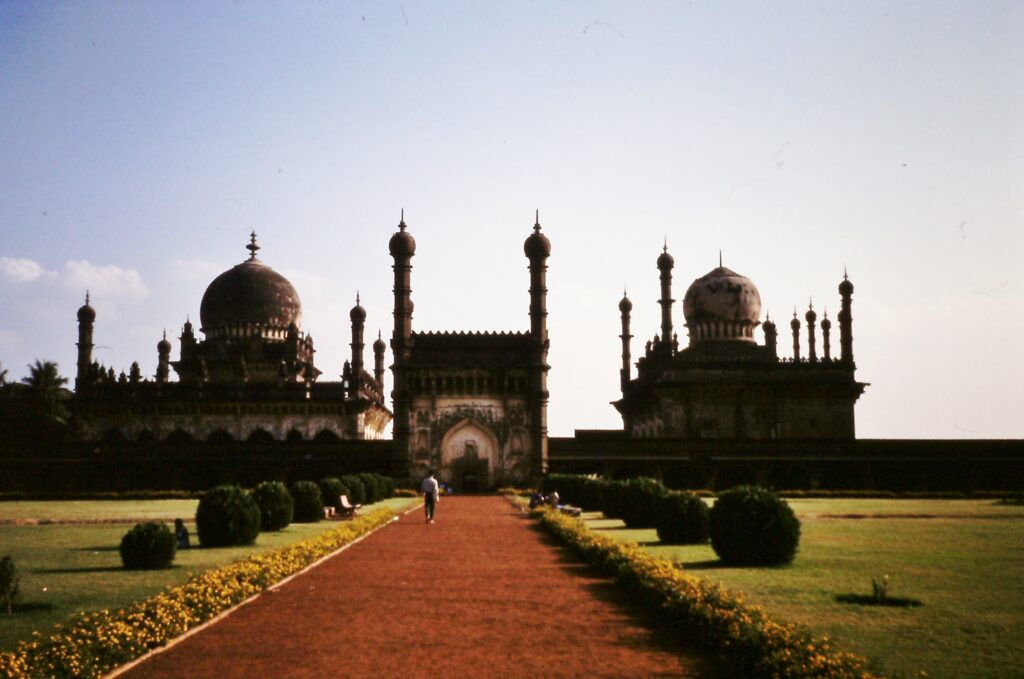I knew I was going to like Bijapur when it transpired that the sole means of transport from the railway station to the government rest house was a horse and cart or tonga, not any old horse but a fine, well-groomed and handsome mare and a gaily painted wooden cart with bench seats to either side and a natty parasol for shade.
Bijapur is an extraordinary, but little visited, town in the very centre of India. On Gill’s chart of gorgeousness v inaccessibility (see September2019) it must be near a 10. To put it frankly, it is not near anywhere remotely interesting and is extremely difficult and tiring to get to. My 250k train journey from Hubli, in itself a place of no significance, took over 7 hours. Add in a fearsomely hot climate with temperatures regularly over 40 degrees and you can see why it is little visited by tourists despite it having some of the most complete and impressive Muslim architecture in the sub-continent. Not for nothing is it called the Agra of the South.
The heyday of Bijapur was the C15 –C17 rule of the Ali Shah kings who built a succession of glorious mosques, mausoleums, palaces and fortifications to rival anything else in India. However, unlike those in the big cities of Delhi and Agra, the monuments of Bijapur were left to quietly settle into peaceful obscurity, though still well managed and maintained.
Perhaps the two most spectacular monuments are the Gol Gumbaz and the Ibrahim Roza. The former, built in 1659, is perhaps more noted for its size than its grace and beauty. It is the mausoleum of Mohammed Adil Shah and assorted wives, family and mistresses. Set within well- manicured gardens, the stand out feature is the sheer scale of the central dome, reputed to be the second largest in the world after St Peter’s in Rome. The interior is the largest space in the world covered by a single dome.

While the Gol Gumbaz goes for sheer scale, the Ibrahim Roza is an essay in fine proportions, detail and craftsmanship, indeed many of its details are thought to have inspired the builders of the Taj Mahal built soon after. It is another mausoleum, this time for Ibrahim Adil Shah (1580-1626) and his family. When oldgreytravel visited there was no entrance charge and hardly any visitors. It was like touring the Taj Mahal on your own.

Elsewhere the town is littered with mosques, palaces and fortifications in various states of repair, some still in use and others ghostly reminders of past glories. Compared to the gargantuan scale of Indian cities, Bijapur is a minnow and its quiet, sleepy character with its many gardens and tree lined streets is a welcome relief to the frenetic pace of most Indian cities.
Oldgreytravel visited Bijapur some 25 years ago. Things have undoubtedly changed. I doubt that tonga are any longer the prime means of local transport and I doubt whether many of the monuments are now free to enter. The population has doubled and even its name has changed to Vijayapura. Whether mass tourism has hit the city I wonder, it is still remote, hot and difficult to get to. Why go there when you can process around Agra with thousands of other tourists?